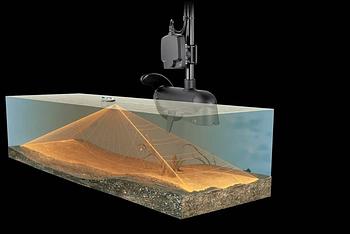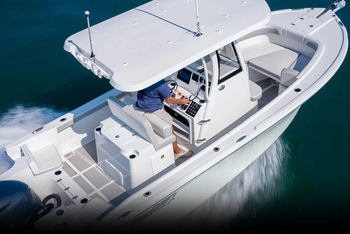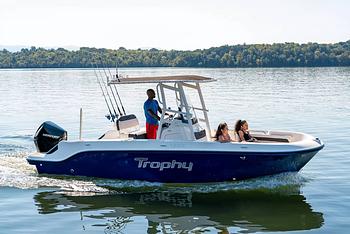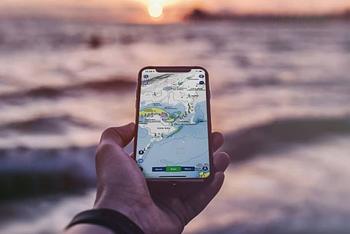Sailing is a wonderful hobby that can bring a lifetime of relaxation, adventure, and fun. It offers the chance to learn new skills, spend quality time with the whole family, to explore new destinations and take part in a whole host of different activities. There are many types of sailboats for sale, so before you venture down the road of buying your first sailboat, it’s important to understand the different types of sailboats and which one will be best for you and your family. With everything from tiny dinghies up to enormous superyachts, the range is huge.
Here we’ll explore the different sailboat types and uses, look at their pros and cons, and how to choose the right one.
Different Types of Sailing Boat by Hull
With so many different sailboat variations, sailboat uses and styles of sailboat, there are different ways we can identify them, and one way is by hull type. There are three categories; monohulls (with one hull), catamarans (with two hulls) and trimarans (with three hulls).
Monohull sailboats
Monohulls are the most common type of sailboat and are designed with a single hull, and have a long, narrow shape which makes them fast and easy to maneuver. Monohulls are typically designed for recreational sailing, and are great for long-distance cruising, coastal sailing, and racing. As they can be relatively inexpensive to buy and easy to maintain, monohulls are often one of the most popular types of sailing boats for beginners. As the broadest range of sailboats, monohulls come in all shapes and sizes, but can also have vastly different keel types. See our comparison between monohull and catamaran sailboats.

Examples of monohull keels include:
-
Full keel
Full keel consists of heavy ballast which runs along the bottom of the hull and keeps the boat centered in the water
-
Cutaway keel
Cutway keep works in the same way as a full keel but has a section cut away to allow for better maneuverability in shallow waters
-
Fin keel or wing keel
These are often bolted on to the hull and can have a heavy bulb or wing at the bottom for additional stability
-
Swing keel, lifting keel, daggerboard or centerboard
All of these are identified by their ability to be retracted into the hull, allowing for access to shallow water and additional speeds
-
Shallow planing hull:
Usually found on types of small sailing boats and dinghies, it allows them to surf on waves and enter shallower water.
Catamaran sailboats
Catamarans are two-hulled sailboats with a deck or trampoline in between that are typically wider and more stable than monohulls. They also provide more space and storage, and are great for sailing in shallow waters. Popular choices for those wanting to go fishing, cruising and racing, catamarans are gaining in popularity particularly because of their increased stability which is less likely to cause seasickness. Because of their lack of deep, heavy keels (not necessary because of their two-hulled stability) catamarans are known for their speeds and make for popular daysailers and charter boats.

Trimaran sailboats
Trimarans are three-hulled sailboats that are usually faster and more stable than monohulls. They have a long, narrow shape, and they provide a good amount of space and storage. Trimarans are great for racing and long-distance cruising, and they are often used for fishing and recreational sailing. With a higher purchase price and less availability on the market, they are still fairly uncommon compared to monohulls and catamarans although larger trimaran yachts are gaining popularity thanks to their stability and speed. See our comparison guide between trimarans and catamarans.

Different Types of Sailing Boats
There are many ways to categorize sailboats, from their rigging to their mast configuration, their rudder type, hull type or by the different classes of sailboat.
Another way to identify or categorize sailboat types is by their rigging. This refers to the configuration of the mast (or masts) and sail (or sails) and there are several types depending on what they’re used for.
These are some of the most common sailing yacht types:
Sloop
Sloop are the most common type of sailboat on the water, and are characterized by a single-mast rig which frequently has a triangular mainsail and a headsail. They make for one of the most popular types of sailing boats for beginners as well as seasoned pros as they are easy to learn to control and maneuver, fun to sail and can be used for all types of sailing in different conditions. Sloops can get to great speeds with their rig configuration and offer good windward performance and as such they are popular racing boats as well as the perfect multi-purpose, easy maintenance leisure yacht. On the downside, sloops can be easier to capsize than some other sailboats and they require a tall mast to accommodate the two sails.
Cutter
While it might seem as though a cutter and sloop are barely distinguishable, a closer look shows that in fact the rigging is quite noticeably different. Yes, both types have a single mast, but a cutter has a two headsails, the additional one known as a staysail. This additional sail offers better control and more stability than a sloop and its singular jib sail, as well as being better at performing in adverse weather. The other difference worth noting is that many cutters have a spar extending from the bow, known as a bowsprit which increases the amount of sail area. The downsides to a cutter for some people is the rigging is more complex than that on a sloop.
Schooner
Schooners are probably the most easily identifiable type of sailboat to grace our seas. For centuries these multi-masted sailing yachts have transported sailors, soldiers, goods and passengers around the world, their multiple sails offering excellent offshore handling and the ability to withstand powerful sea conditions. They have a minimum of two masts, but can have many more, with two almost identical sized sails in the foresail and mainsail. Better suited to experienced sailors with a crew, they have a complex rigging with multiple sail options allowing for precise control offshore.
Ketch and Yawl
Similar in appearance and handling, the ketch and yawl are characterized by their two masts, with the mainmast being taller than the mizzen mast. The two differ in that the ketch has the mizzen mast is forward of the rudder post, while the yawl has its mizzen aft of it. In general, ketch and yawl sailboats have shorter masts and smaller sails, making them slower than a sloop or cutter but more able to withstand rough sea conditions. Check our guide: Ketch vs Yawl
Daysailer and Dinghy
At the smaller end of the sailboat classification list are daysailers and dinghies. A dinghy tends to be under 28 feet in length and usually dual powered with a small outboard engine. Perfect for short cruises in protected waters they are great beginner yachts and easy to handle and rig. While usually slightly larger than a dinghy, the daysailer is, as the name suggests, perfect for short coastal cruising, have a single mast and can be either monohull or multihull. Both are a broad categorizations based on usage and size rather than shape or rigging.

Racing Sailboats
The sport of racing sailboats dates back centuries and is today as popular as ever. There is no one type of racing sailboat, and the term in fact covers a broad spectrum of yachts, from one-man dinghies all the way to 100-foot yachts. In fact, any sailing yacht can be raced and there are many classes of sailboats and competitions around the world. Keel boats such as sloops and cutters are popular for racing, as they can sail quite close to the wind, but you’ll also find multihulls and the ultra-fast foiling hull boats which rise out of the water onto a narrow foil and can reach speeds well in excess of 50mph.
Motorsailer Vs Sailboat
While many sailboats also have engines, the motorsailer is a different and easily identifiable style of yacht. It uses a combination of wind power and engine power, and in some cases resembles a motorboat in style more than a classic yacht shape. The motorsailer offers great opportunities for varying types of cruising such as coastal voyages, as well as living onboard, and is a reliable and easy-to-handle yacht popular with families. On the downside, a motorsailer does tend to come with a higher price tag than sailboats of the same size and they aren’t usually as fast or efficient as a either a full powerboat or sailboat.
Best Types of Sailboat by Activity
With so many variations, styles and types of sailboat on the market, it makes sense that they are designed for different activities and uses. Whether you want to sail around the world, enjoy a spot of day sailing or want something easy to handle, then you need to find the right kind of boat for your needs.
Best sailboat for stability
When it comes to stability, the answer to which sailboat is best isn’t as clear cut as it might at first seem. The multihulls are the clear winners in temperate conditions, the trimaran taking first place thanks to its wide beam and triple hull configuration. A close second is the catamaran, also known for its lack of rolling, which is gaining popularity with those prone to seasickness who are looking for a yacht for day sailing or coastal cruising.
However multihulls tend to be less stable when it comes to rougher sea conditions, and it’s impossible to right a capsized catamaran or trimaran. Monohulls with deep displacement hulls are by far the best choice in these instances, their design allowing them to keel far over in rough weather without capsizing.
Best sailboat for Offshore Cruising
When adventure is calling and you want to head further offshore or embark on blue water cruises, then you need a yacht that is up to the challenge. The most important aspect of offshore cruising is experience and preparation, and there are many boats out there that can cross oceans if they’re properly equipped and handled. The simple rigged sloop, cutter or ketch are popular options. With easy handling qualities and good windward performance, a simple sloop is a good choice, while the cutter (similar in many ways) has even better rough weather performance qualities thanks to its additional headsail. The ketch, although slower, can be more stable in rough weather and has shorter and therefore stronger masts.
While it’s not a beginner’s sailboat, a classic schooner is probably the best sailboat for offshore cruising as it allows for precise handling even in big seas, as well as being fast and powerful. They have a deep displacement keel, which means they are more stable in rough weather too.
Best sailboat for a day
More simple rigged sailboats tend to be the most popular day sailers, with the sloop, ketch, yawl and cutter top of the list. The idea of a simple rig makes using them coastally or in inland waters fun and fuss-free, and they make for great beginner boats. Likewise, on very protected waters such as lakes or coastal areas, smaller dinghies can great day boats too.
Best budget sailboat
When it comes to budget, dinghies top the list of the cheapest sailboats. With or without an engine, they tend to be small and simple, without cabins, heads, instruments or other luxuries to add to the cost. Sloops, ketches and cutters too can be found on a budget, especially on the second hand market. But it’s important to look at more than the purchase price when buying a second hand boat, and consider the condition, repairs and maintenance that might need doing. Check out our guide Buying a Cheap Boat: Is it a Good Idea?
If you’re considering buying a sailboat then Rightboat.com has one of the biggest collections of new and used boats for sale in the world. From dinghies to sailing superyachts and everything in between we work with the best brokers in the business as well as private sellers offering you the biggest choice.
Related Articles and Guides
26th Apr 2024
The Best Real-Time Imaging Sonar for Fishing-Finding
14th Apr 2024
Best Small Center Console Boats Under 25 Feet
7th Apr 2024
Best Cheap Fishing Boat Brands, Affordable to Cheapest of All
30th Mar 2024






